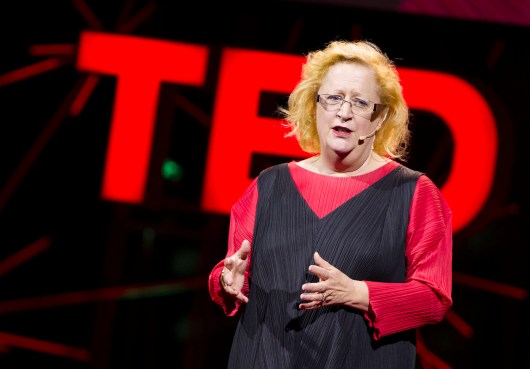An epidemic hidden in plain view
Margaret Heffernan begins her TEDGlobal talk by telling us a story: In Oxford in the 1950s, there was physician named Alice Stewart who was fascinated with the new science of epidemiology. She realized, as a scientist does, that the way to prove herself was to find a hard problem and solve it. The problem she chose was the rising incidence of childhood cancer. Most diseases correlate with poverty, but the childhood cancer of the time was affecting mainly affluent children. She had difficulty getting funding, so she knew that she had only one shot at collecting data. She had to ask every question she could think of.
In a blizzard of data, one thing stood out, says Heffernan, “with a statistical clarity most scientists could only dream of.” By a ratio of 2 to 1, the children who had cancer were born to mothers who were x-rayed when pregnant.
That flew in the face of the conventional theory, that x-rays were safe up to a point. It also flew in the face of the conventional wisdom that new technology doesn’t harm people, and that doctors definitely don’t harm people. And no practicing doctor, it turned out, wanted to hear it. It was 25 years before x-raying pregnant women was abandoned in the US and UK.
“The data was out there, it was open, it was freely available, but nobody wanted to know. A child a week was dying but nothing changed. Openness alone can’t drive change.”
Thinking by arguing
How did Alice know she was right? Heffernan tells us about Alice’s collaborator, a statistician named George. He was the oposite of her in all ways. But, Heffernan points out, he said an amazing thing for a collaborator: “My job is to prove that Dr. Stewart is wrong.” He actively tried to find ways of crunching the data that would “create conflics around her theories,” to do everything he could to show she was wrong. This is what gave her the confidence that she was right.
“How many of us,” asks Heffernan, “dare to have such collaborators?”
This kind of thinking is difficult. It takes “finding people who are very different from ourselves. We have to seek out people with different backgrounds, different experiences, and different ways of thinking, and we have to engage with them.” This, she says, takes a lot of patience and energy. Heffernan has come to think that it’s so difficult “that it’s a kind of love.”
This is difficult enough one-to-one, but most problems come from people in organizations. “How do organizations think? Well, for the most part, they don’t.” They can’t think, she says, because the people in them are afraid of speaking up, afraid of conflict. A survey said that 85% of people in companies felt there were serious problems that they were afraid to talk about. Heffernan thinks of this as a huge problem. “Organization can’t do what George and Alice did. They can’t think together.”
She once worked with an executive for a medical device company. The executive thought the device they were working on was too complicated, and consequently not safe. But no one else seemed afraid, so he was afraid to articulate his doubts — worrying he might look stupid. But it turns out that, when he finally found a way to raise that concern, everybody else had the same questions and doubts. “Yes,” she says, “there was a lot of debate and argument, but it allowed everyone around the table to be creative.”
How do we make this easy?
She thinks we need to be teaching these skills early and throughout a person’s education. “The biggest problems that we face mostly don’t come from information that is secret, or hidden. It comes from information that is freely available out there, but we are wilfully blind to because we don’t want to handle the conflict that it provokes.”
She closes with a call to arms: “The truth won’t set us free until we develop the skill, the talent, and the moral courage to use it. Openness isn’t the end, it’s the beginning.”
Q&A
In a short Q&A afterward, host Chris Anderson asks, “Is there anything people in charge of organizations can do to encourage this kind of behavior?”
Heffernan replies that you have to celebrate the people who question their own leaders. “The sad truth is that as the CEO you mostly don’t know what’s going on, because no one will tell you. You have to cultivate and cherish the people who do.”
Photos: James Duncan Davidson

Comments (5)
Pingback: Why We Shouldn’t Always Get Along | MICHAELA FENGSTAD
Pingback: Conflict Creates Progress–Don’t Let the Unpleasant Get in the Way of “Better”
Pingback: In Business, Failure Is Always An Option - | Dallas Marketing | Stand-Out Communication
Pingback: Opposites Attract? Or, Hang Out With Like-Minded? From Differences To Mistakes – part I | Toward A Sensible Organization
Pingback: Simplify My Small Business Podcast | Simplify My Small Business 52 - Is conflict in business or life bad?